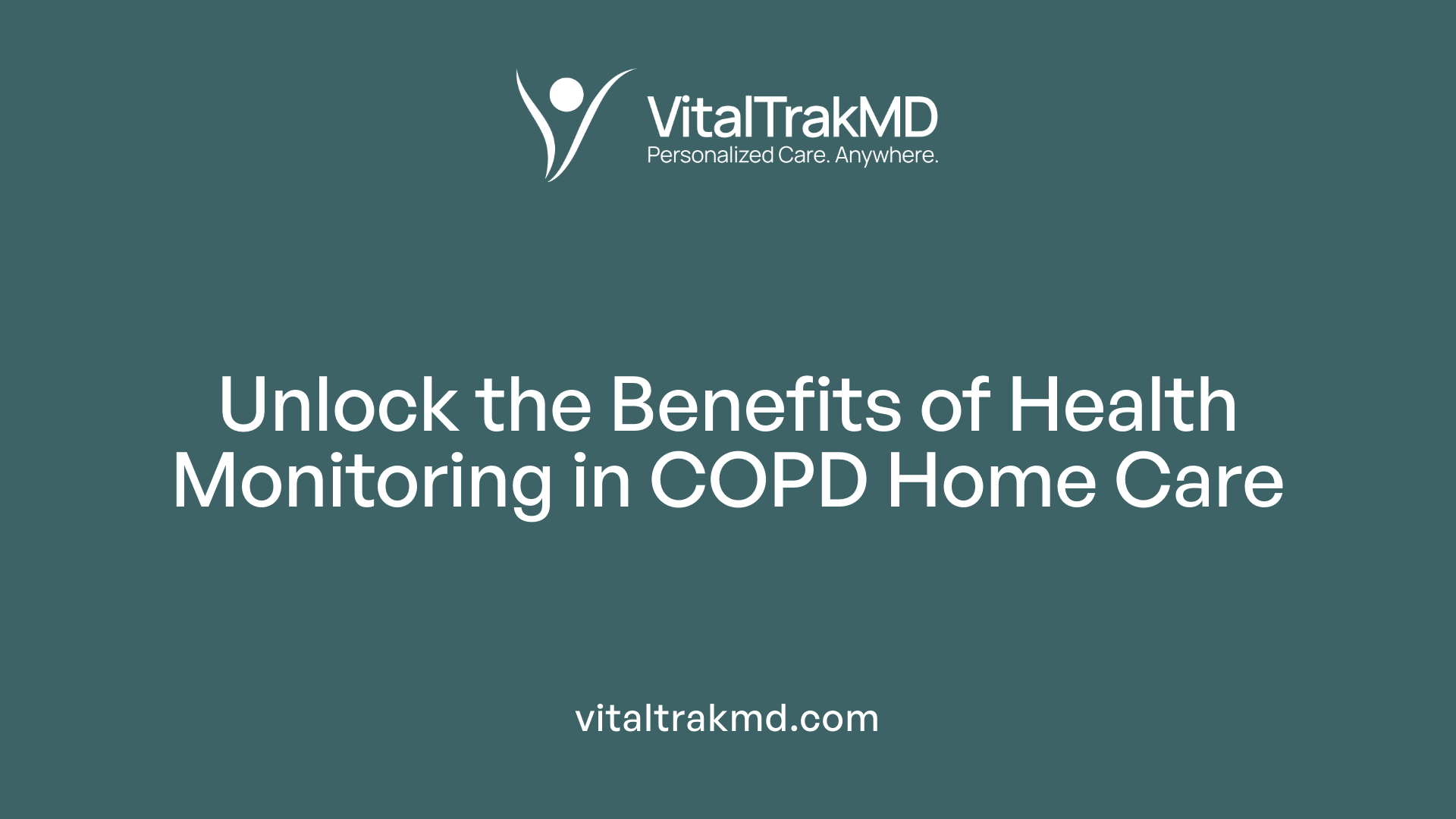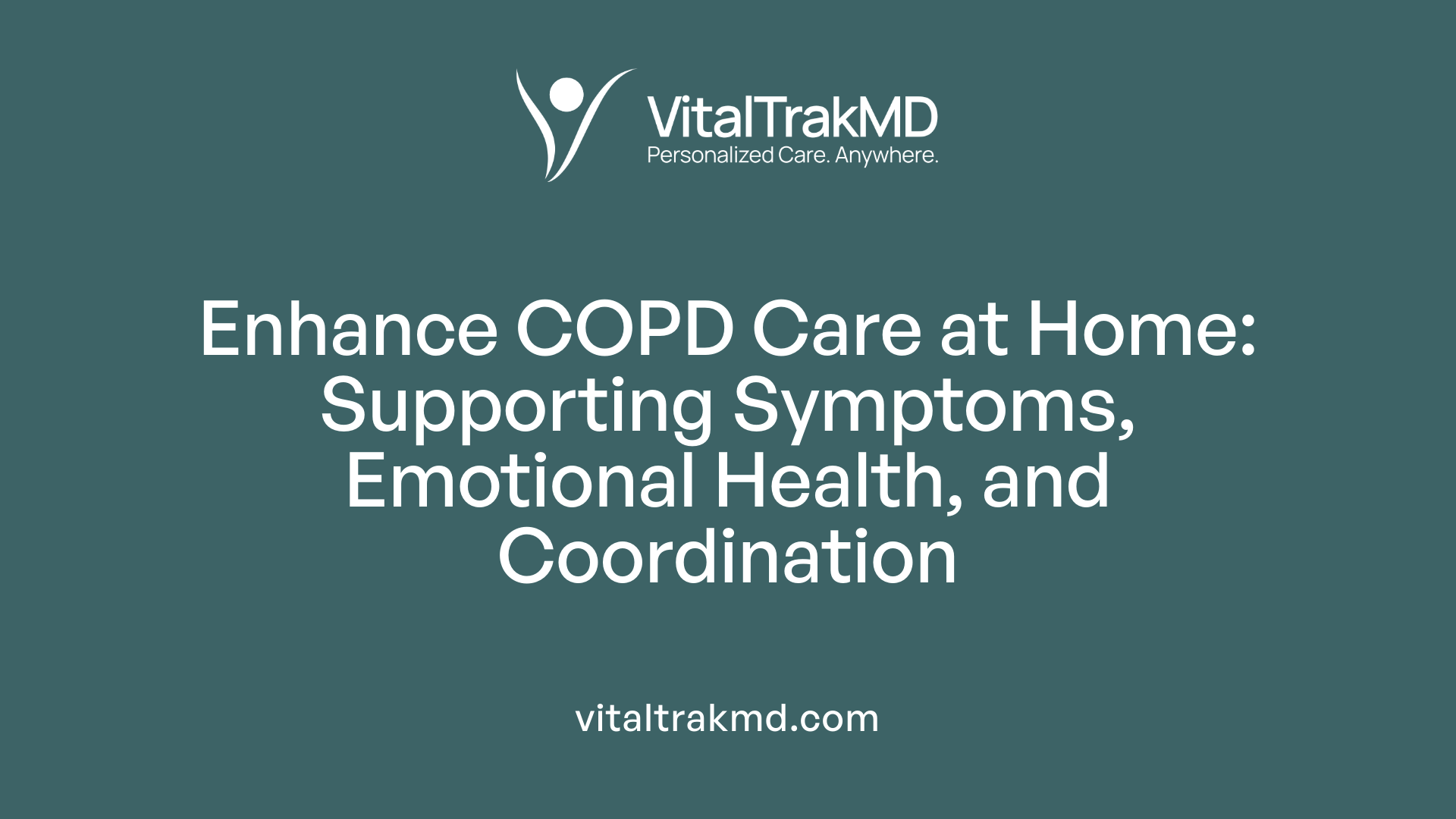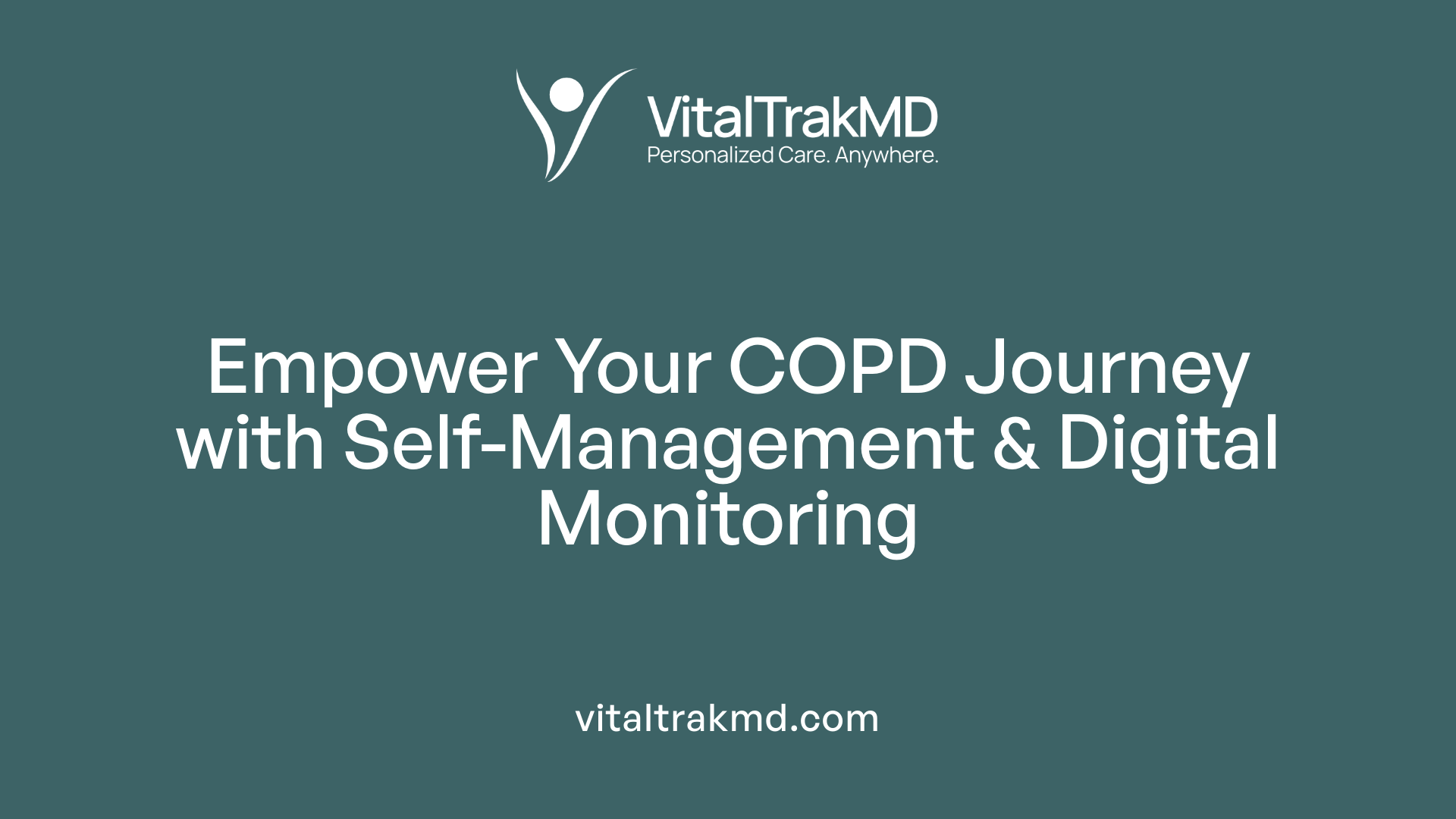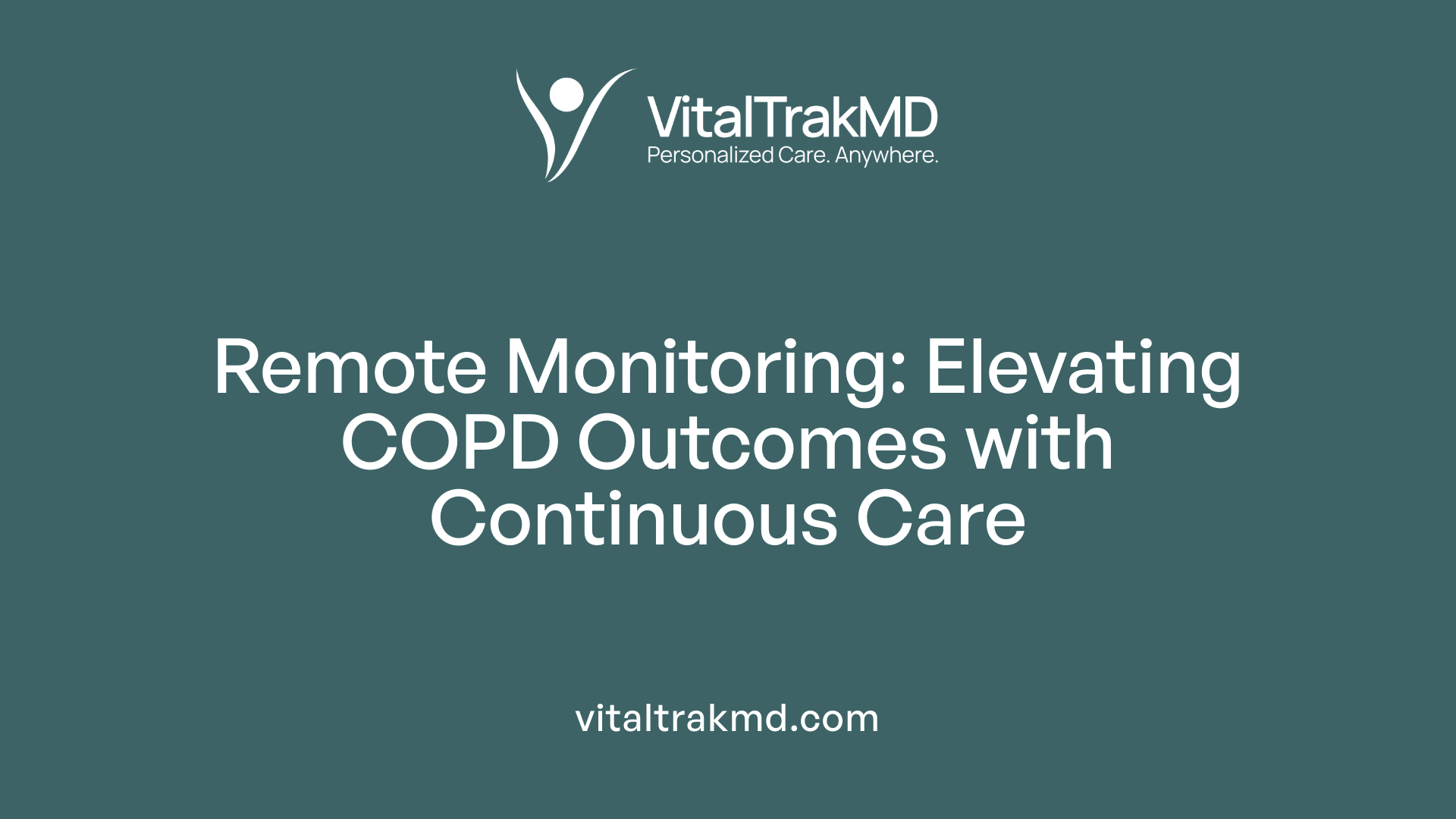Health Monitoring Benefits for COPD Patients Receiving Home Care

Advancements in Home Health Monitoring for COPD Patients
Chronic Obstructive Pulmonary Disease (COPD) remains a leading cause of death and disability worldwide, impacting millions of Americans. Increasingly, healthcare providers are turning to innovative remote health monitoring technologies and personalized home care services to improve management, reduce hospitalizations, and enhance patient quality of life. This article explores how digital tools, telemedicine, and home health services are shaping the future of COPD management, offering profound benefits for patients and caregivers alike.
Benefits of Health Monitoring in COPD Home Care

What are the benefits of health monitoring for COPD patients receiving home care?
Health monitoring plays a crucial role in managing COPD effectively at home. By utilizing remote symptom tracking and physiological data collection, such as oxygen saturation and respiratory rate, patients and healthcare providers can detect early signs of exacerbations. This proactive approach allows for timely interventions, which can prevent complications and reduce the urgency of emergency hospital visits.
Digital tools like wearable sensors and portable devices facilitate personalized self-management plans. These tools help patients understand their condition better, adhere to medication schedules, and perform breathing exercises correctly. Enhanced patient education and engagement foster a sense of control over their health and improve overall treatment adherence.
Remote monitoring also enables clinicians to assess disease progression with greater accuracy. Continuous data transmission allows for better care coordination and quick response to health changes. Implementing AI and machine learning algorithms further refines predictive analytics, identifying at-risk patients before symptoms worsen.
Overall, integrated health monitoring systems promote a proactive, accessible, and patient-centered approach to COPD care. This model not only enhances quality of life but also has the potential to decrease hospital admissions and healthcare costs by catching issues early and managing symptoms effectively.
Supporting Symptom Management, Emotional Well-being, and Care Coordination at Home

How can home health services support symptom management, emotional health, and care coordination for COPD patients?
Home health services play a vital role in managing COPD by offering tailored, in-home care plans designed to address the unique needs of each patient. These plans include regular assessment of spirometry results, oxygen levels, and activity tolerance to monitor disease progression and prevent complications.
An interdisciplinary team of healthcare professionals—such as nurses, respiratory therapists, and social workers—collaborates to provide comprehensive care. They work together to recognize early signs of worsening symptoms, adjust medications, and implement oxygen therapy accordingly. This ongoing monitoring helps reduce COPD exacerbations, which are significant contributors to hospitalizations.
Pulmonary rehabilitation integrated into home health services, including breathing exercises, energy conservation techniques, and physical activity guidance, contributes to improved lung function and activity tolerance. Safety assessments are also conducted to identify hazards in the living environment, reducing the risk of falls or other accidents that could worsen the patient's condition.
Beyond physical health, these services support emotional well-being by addressing issues like anxiety, depression, and social isolation—common among COPD patients. Patient and caregiver education on inhaler technique, medication management, and recognizing early signs of exacerbation empower patients to take an active role in their care.
Caregiver education and psychosocial support are crucial for fostering independence and emotional resilience. By providing emotional counseling, social workers help patients cope with chronic disease challenges, ultimately improving quality of life.
Overall, home health care creates a supportive environment for managing physical and emotional health, reducing hospital visits, and enhancing patients' comfort and independence, all while containing healthcare costs.
The Vital Role of Self-Management Through Digital Monitoring

Why is self-management support through health monitoring important for COPD patients?
Self-management support via digital health tools is crucial for people with COPD because it helps detect symptoms early before they escalate into severe exacerbations or hospital visits. Through devices that measure lung function and oxygen saturation, patients can gain insights into their health status consistently at home. This proactive approach allows for timely medical intervention, often 4 to 5 days earlier than traditional care would catch worsening symptoms.
Empowering patients with technology, such as wearable monitors, digital inhalers, and mobile apps, fosters better adherence to treatment routines. Patients can receive reminders for medication intake and perform breathing exercises regularly. Additionally, real-time data transmission lets healthcare providers monitor physiological parameters remotely, enabling personalized advice and adjustments to treatment plans.
Integrating these digital tools with chronic care management (CCM) and remote patient monitoring (RPM) enhances personalized, accessible, and ongoing disease control. These combined strategies support better symptom management, reduce emergency hospitalizations, and improve overall quality of life. Moreover, digital health solutions cater to diverse populations by offering scalable and adaptable support, ultimately transforming COPD care from reactive to proactive.
Impact of Remote Monitoring on COPD Management and Outcomes

How does remote health monitoring impact COPD management and outcomes?
Remote health monitoring (RPM) transforms the way COPD is managed by providing continuous, real-time data on patients’ physiological parameters. Devices such as pulse oximeters, spirometers, and wearable sensors collect vital signs like oxygen saturation (SpO2), respiratory rate, and heart rate, transmitting this information instantly to healthcare providers.
This constant flow of data allows clinicians to identify signs of exacerbation early, often days before symptoms worsen sufficiently to seek emergency care. Research indicates that RPM can reduce hospitalizations by up to 65% and emergency room visits by over 44%, supporting timely interventions and preventing serious health crises.
In addition to monitoring, RPM supports pulmonary rehabilitation and self-management efforts. Patients can track their lung function, physical activity, and oxygen levels at home, empowering them to participate actively in their care. During the COVID-19 pandemic, these technologies became even more vital, reducing the need for in-person visits while maintaining effective disease control.
Programs that combine RPM with health coaching, education, and regular provider feedback have shown improvements in patients’ quality of life, physical activity levels, and emotional health. This holistic approach not only helps manage symptoms but also enhances overall well-being.
However, challenges such as device accuracy, patient acceptance, data privacy, and technological literacy remain. Despite these hurdles, the widespread adoption of wearable tech and AI-driven analytics signals a move toward more personalized and proactive COPD care, ultimately leading to better clinical outcomes and reduced healthcare costs.
Digital Tools, Telemedicine, and Future Directions in COPD Care

How do digital health tools and telemedicine improve COPD patient care at home?
Digital health tools and telemedicine play an essential role in modern COPD management by enabling remote and continuous monitoring of patients' lung function, oxygen saturation, and activity levels through devices such as pulse oximeters, spirometers, and wearable sensors.
These technologies allow healthcare providers to receive real-time data, identify early signs of exacerbations, and intervene promptly, often before symptoms worsen significantly. This proactive approach helps prevent hospitalizations, reduces emergency visits, and improves overall disease control.
Furthermore, digital tools facilitate self-management by providing patients with education on inhaler technique, medication schedules, and lifestyle modifications through apps and online platforms. They also support smoking cessation efforts and behavioral change programs.
Tele-rehabilitation is another innovative aspect, simulating outpatient pulmonary rehab programs at home. Patients engage in physical therapy and breathing exercises remotely, which improves exercise capacity (by up to 15% as shown in studies) and enhances lung function. Psychosocial support services delivered via telehealth can address mental health challenges such as anxiety and depression, common among COPD patients.
Mobile applications and digital inhalers assist with medication adherence, ensuring the right doses are taken on schedule. These tools also automate reminders and symptom surveys, which aid early detection of potential exacerbations.
Despite the promising potential, further research is necessary to determine the most effective ways to incorporate these digital solutions into routine care. Challenges like data security, patient literacy, and access disparities must be addressed to maximize the benefits of telemedicine in COPD management.
The Future of COPD Management: Integrating Technology and Home Care
The integration of innovative remote monitoring technologies, personalized home health services, and telemedicine is revolutionizing COPD management. These tools not only facilitate early detection and proactive treatment but also empower patients through education and self-management. Evidence highlights that such approaches can significantly reduce hospitalizations, improve quality of life, and lower healthcare costs. As research advances and technological adoption grows, the potential for more accessible, efficient, and patient-centered COPD care in home settings continues to expand, promising a healthier future for millions affected by this chronic disease.
References
- Home Health for COPD
- Improving COPD with Care Management and Remote Patient ...
- How COPD Remote Patient Monitoring is Improving Patient Outcomes
- Benefits of Home Health Care and Hospice Care for COPD Patients
- How Telehealth Is Changing The Clinical Practice Of COPD
- Continuous remote monitoring of COPD patients—justification and ...
- In-Home Care for COPD Patients - Elara Caring
- Remote patient monitoring strategies and wearable technology in ...
Recent articles
Want to Feel Better and Live Healthier?
Join hundreds of patients taking control of their health with personalized care that fits their life – not the other way around.
Rated 4.8/5 by 32+ customers







